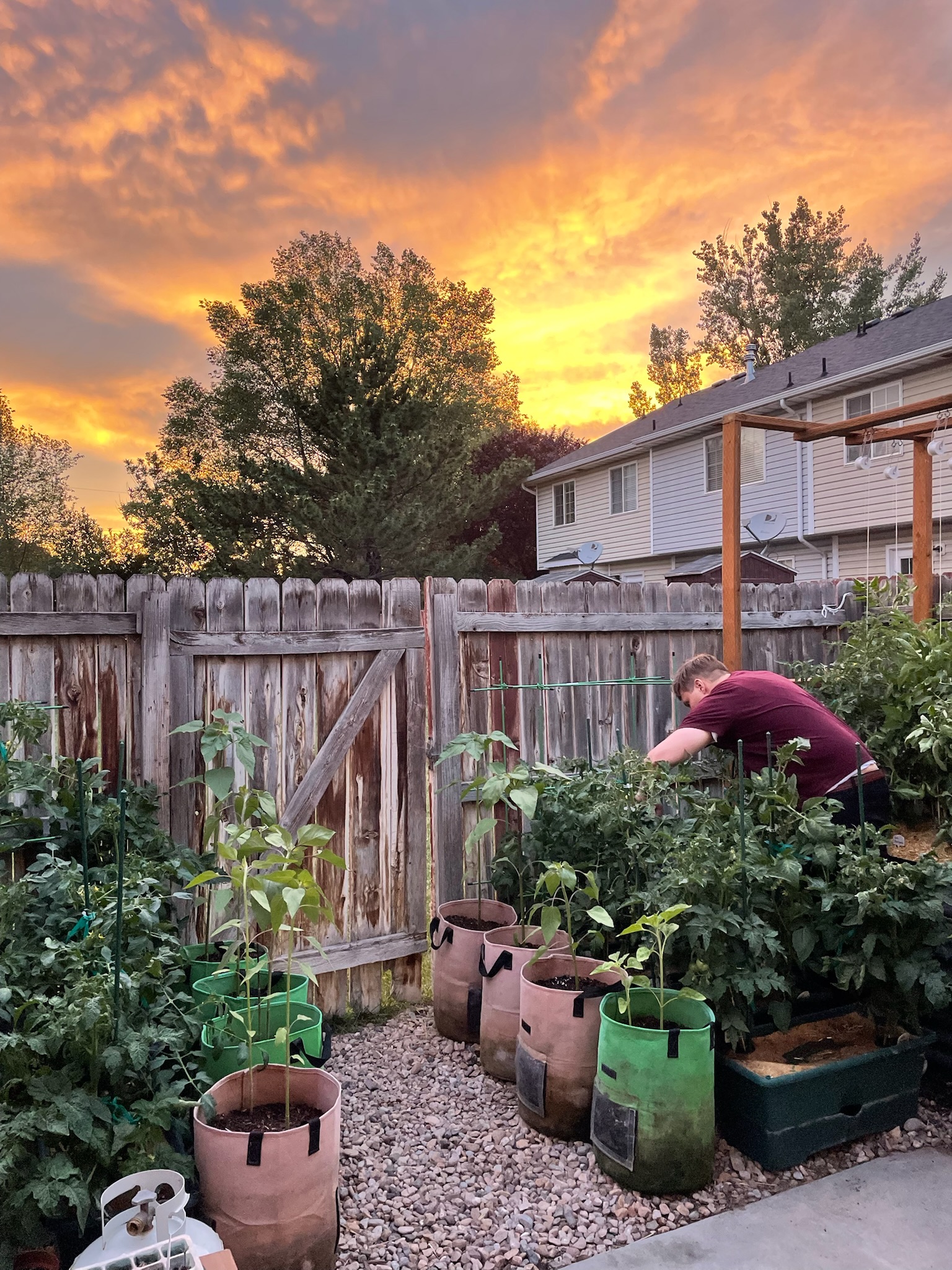
Hey all! Real Farmer Jeff here.
A common reason I see friends and family struggle with failed gardens is a lack of understanding of how much light their garden receives.
Understanding this is simple, yet key for success.
Not only will this help you know where to set up your garden, but it’ll also guide you in what plants to choose. For example, if you have a fully-shaded garden, it may be difficult for you to grow vegetables like tomatoes and cucumbers. Additionally, advanced gardeners use their knowledge of garden light and shade to make sure tall plants are in a location that will not cast unwanted shade on other plants.
In this guide, I’ll help you measure the sunlight and shade in your garden with various techniques to help you get your best garden and harvest yet!
Let’s get started!
Online Tools for Tracking Sunlight
*If you found this blog post because of my Instagram, this is the website from my reel! Note that none of this blog post is sponsored content.
This site uses satellite imagery, and can help you visualize how nearby structures (e.g. your house or trees) cast shadows on your garden.
Simply type in your address, select the “Layers” icon, “Satellite”, and play around with the “Shadows,” “Hours in the Sun,” and “Annual Sunlight” features to better understand your yard’s lighting.
Note that the “Hours in the Sun” filter is much better on a computer than a phone because you can hover over points and it will tell you the reading. ShadeMap has a premium version, but the free version works great.

2. SunCalc (https://www.suncalc.org/)
Enter your address to see how the sun moves across your garden at different times of the year. To have a successful garden, it’s crucial to observe how the sun moves across your space throughout the year. Sunlight patterns change with the seasons. The angle of the sun shifts, affecting which areas receive full sun, partial shade, or deep shade.
In spring and summer, the sunlight is more intense, benefiting sun-loving crops like tomatoes but stressing cool-weather plants like lettuce. In fall and winter, the lower sun casts more shadows, reducing light for fruiting and root crops.
By tracking seasonal sun patterns, you can strategically place plants in the right locations, ensuring each crop gets the ideal amount of light. This helps maximize growth, improve yields, and prevent issues like stunted plants or bolting due to too much or too little sun.

Tracking Sunlight and Shadows in Your Garden
- Pick a Clear, Sunny Day: Choose a day when the sun is out and spend time observing the shadows at various times.
- Take a Picture every 1-4 hours: This will give you a clear image of the shadows hitting your garden.
- Sketch It Out: This method is called sun mapping! Draw a rough layout of your garden and note where the shadow falls at different times of day (morning, noon, and afternoon). This sketch can be a summary of all the pictures you took. Assuming you have four pictures, you could say if sun hits a spot at 4 times a day, it is a full-sun spot. 2-3 times could be partial sun, 1 could be little sun and 0 could be no sun.
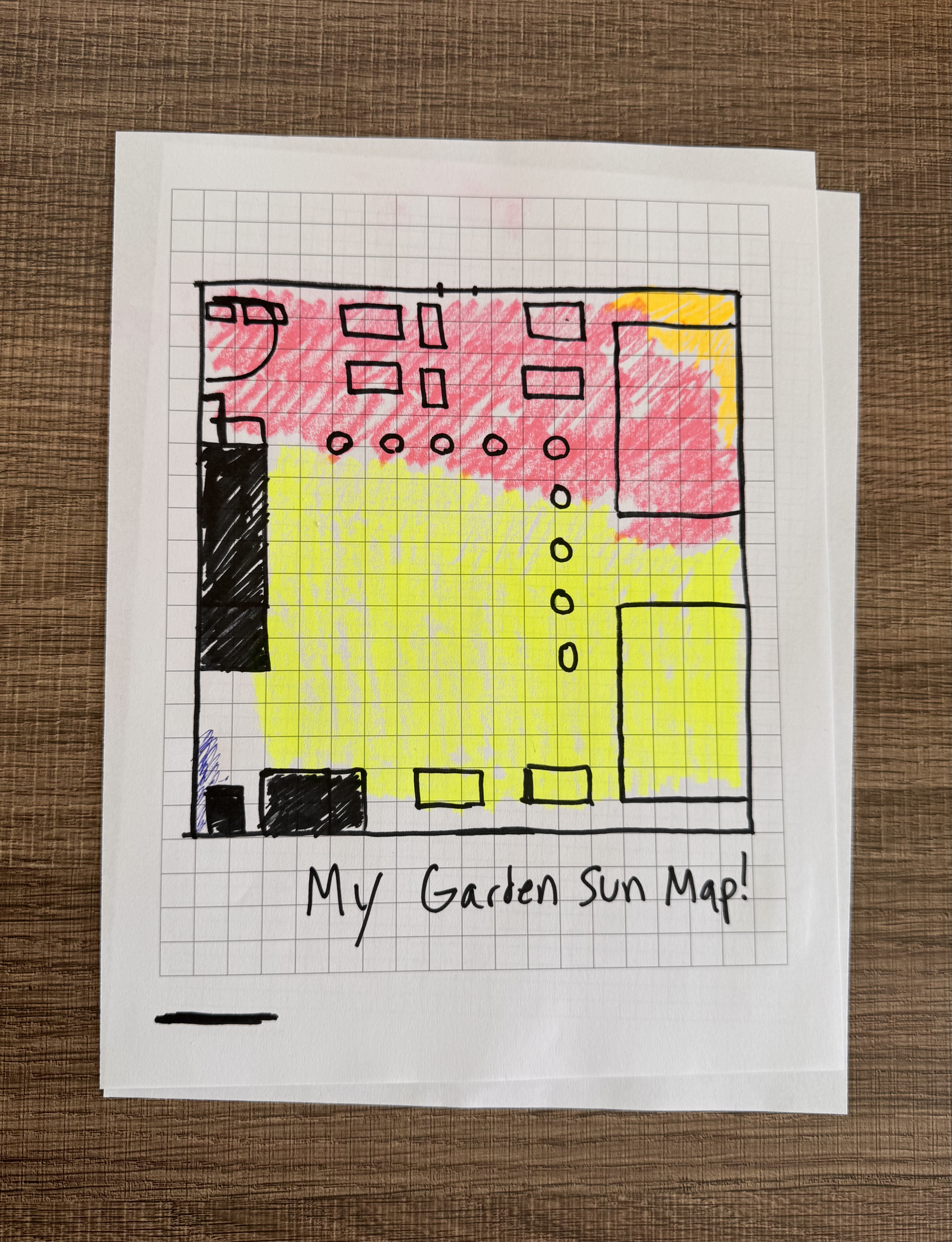
What is the Best Garden Orientation?
North-Facing:
- Receives the least direct sunlight.
- Stays cooler and retains moisture, ideal for shade-loving plants (ferns, hostas, impatiens).
- Not great for most vegetables or sun-loving plants due to lack of warmth and light.
South-Facing:
- Gets full sun throughout the day, making it the best choice for vegetables, herbs, and sun-loving flowers.
- Extends the growing season in cooler climates.
- In hot regions, it may require shading or extra watering to prevent heat stress.

East-Facing:
- Gets morning sun and afternoon shade—gentle on plants and prevents overheating.
- Good for leafy greens, root vegetables, and flowers like hydrangeas.
- Cooler morning temperatures can slow early growth in cold climates.
West-Facing:
- Exposed to intense afternoon sun, making it ideal for heat-tolerant plants like peppers, lavender, and rosemary.
- Can cause heat stress and require more frequent watering in hotter climates.
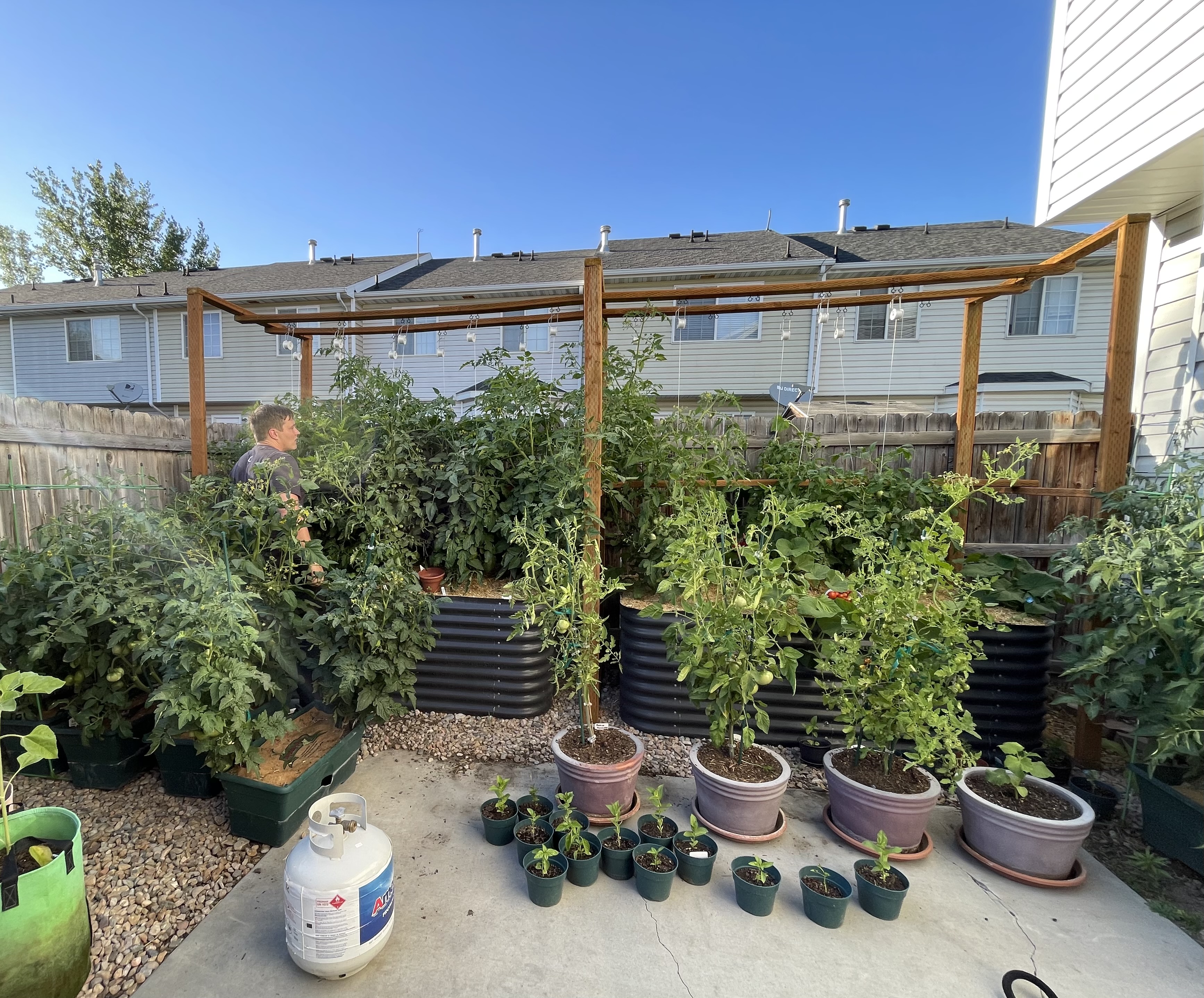
How Much Sun Do My Vegetables and Herbs Want?
- Full Sun (6 – 8+ hrs/day)
- Best for fruiting crops:
- Tomatoes, peppers, eggplant, cucumbers, zucchini, squash, pumpkins, melons, beans, peas, corn, and okra
- Tomatoes, peppers, eggplant, cucumbers, zucchini, squash, pumpkins, melons, beans, peas, corn, and okra
- Best for fruiting crops:
- Partial Sun (4 – 6 hrs/day)
- Good for root and some leafy vegetables:
- Carrots, radishes, beets, turnips, lettuce, spinach, kale, and arugula
- Carrots, radishes, beets, turnips, lettuce, spinach, kale, and arugula
- Good for root and some leafy vegetables:
- Partial Shade (3 – 4 hrs/day)
- Best for leafy greens and cool-weather crops:
- Lettuce, spinach, kale, arugula, Swiss chard, broccoli, cauliflower, and Brussels sprouts
- Lettuce, spinach, kale, arugula, Swiss chard, broccoli, cauliflower, and Brussels sprouts
- Best for leafy greens and cool-weather crops:
- Shade-Loving (<3 hrs of direct sun)
- Tolerant of low light:
- Mint, parsley, chives, cilantro, mustard greens, arugula, some mushrooms
- Tolerant of low light:
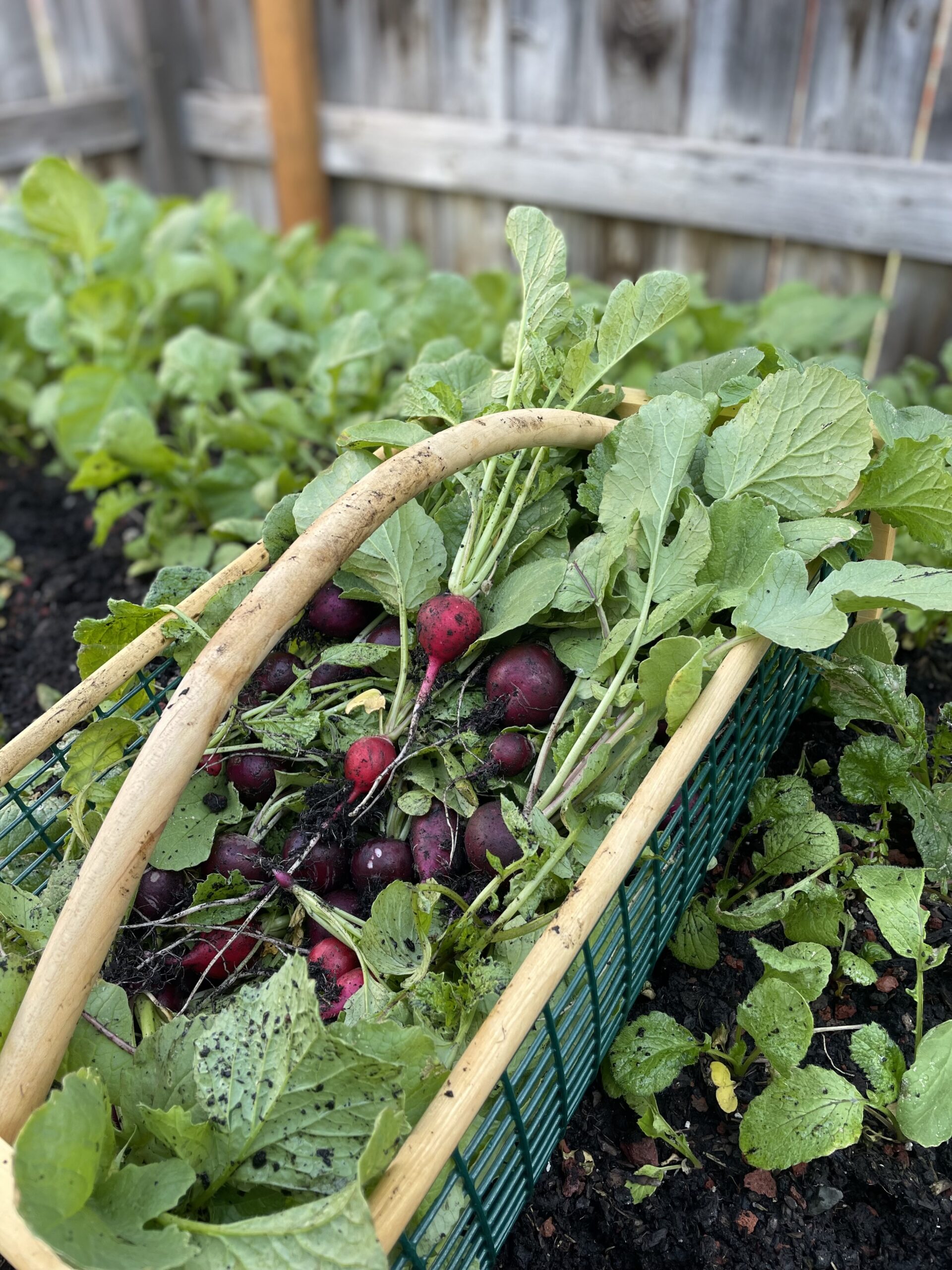
Here’s a compiled table that includes sun-loving, medium sun-loving, and shade-loving vegetables, as well as where herbs generally fit in based on their light requirements:

Thanks for reading along! Best of luck with your garden this year! Figuring out the lighting can be tricky at first, but it’s totally worth the time if you want to have a successful garden.
If you enjoyed this blog post, be sure to check out my other gardening blog posts:
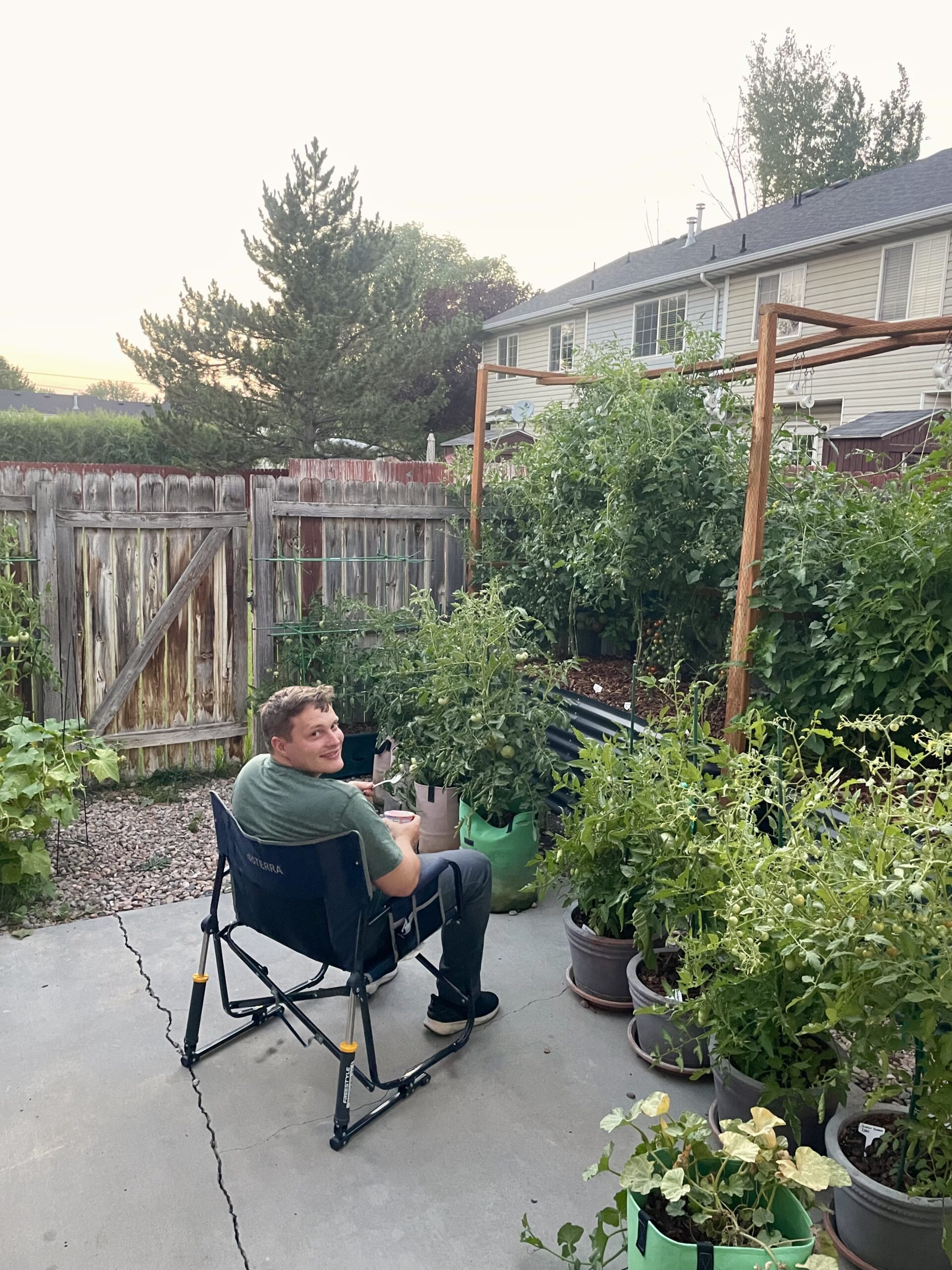

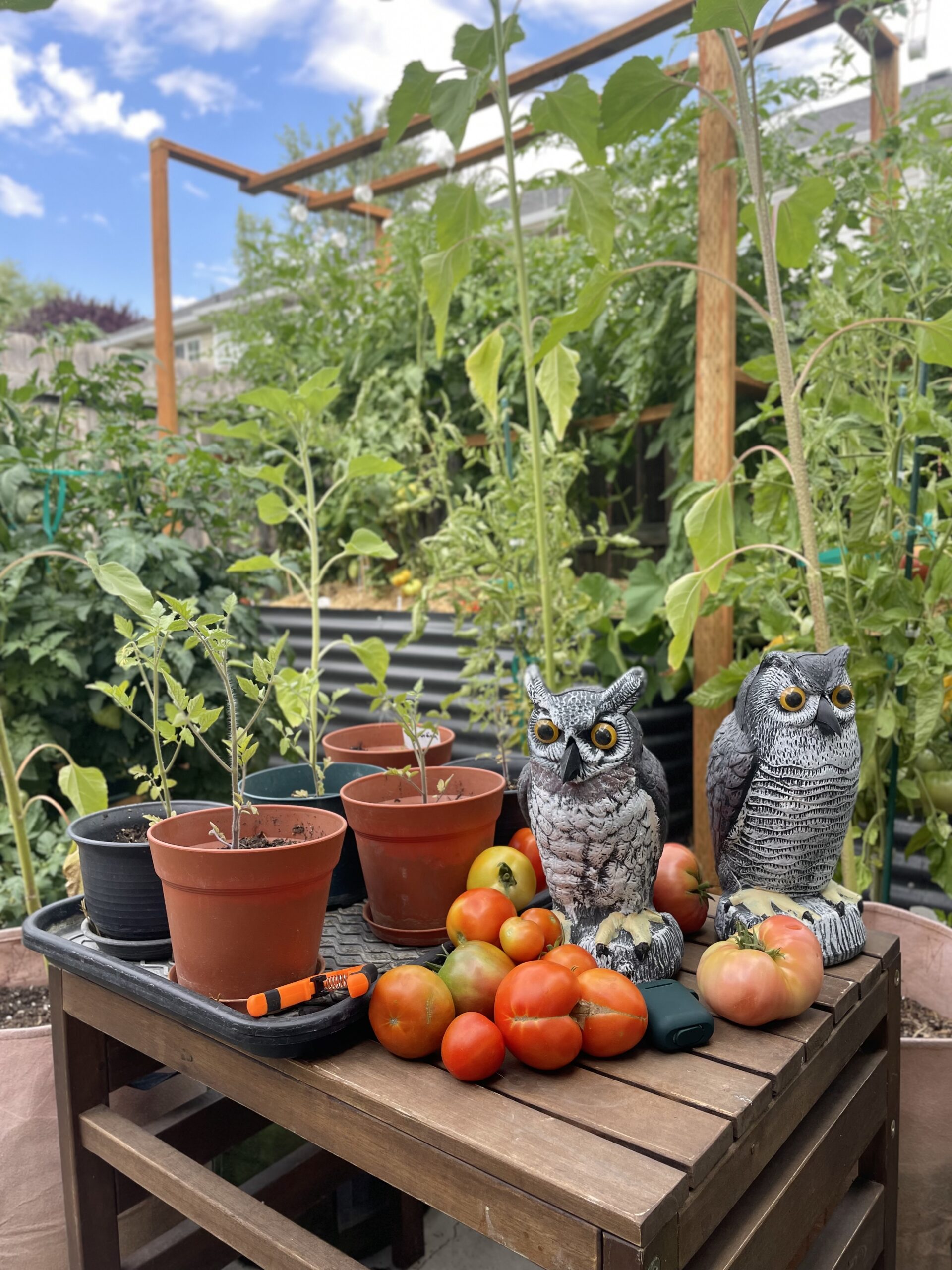




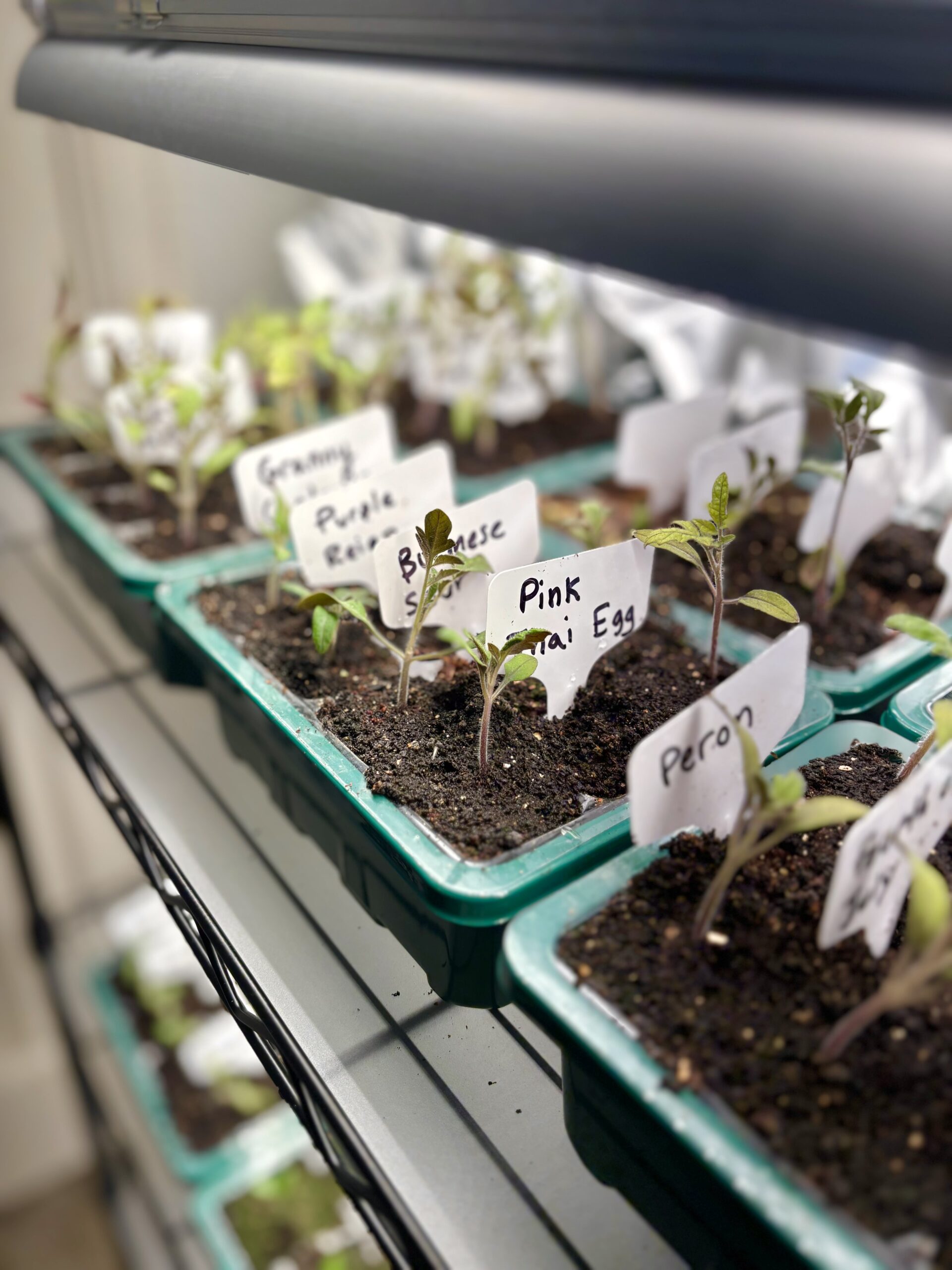
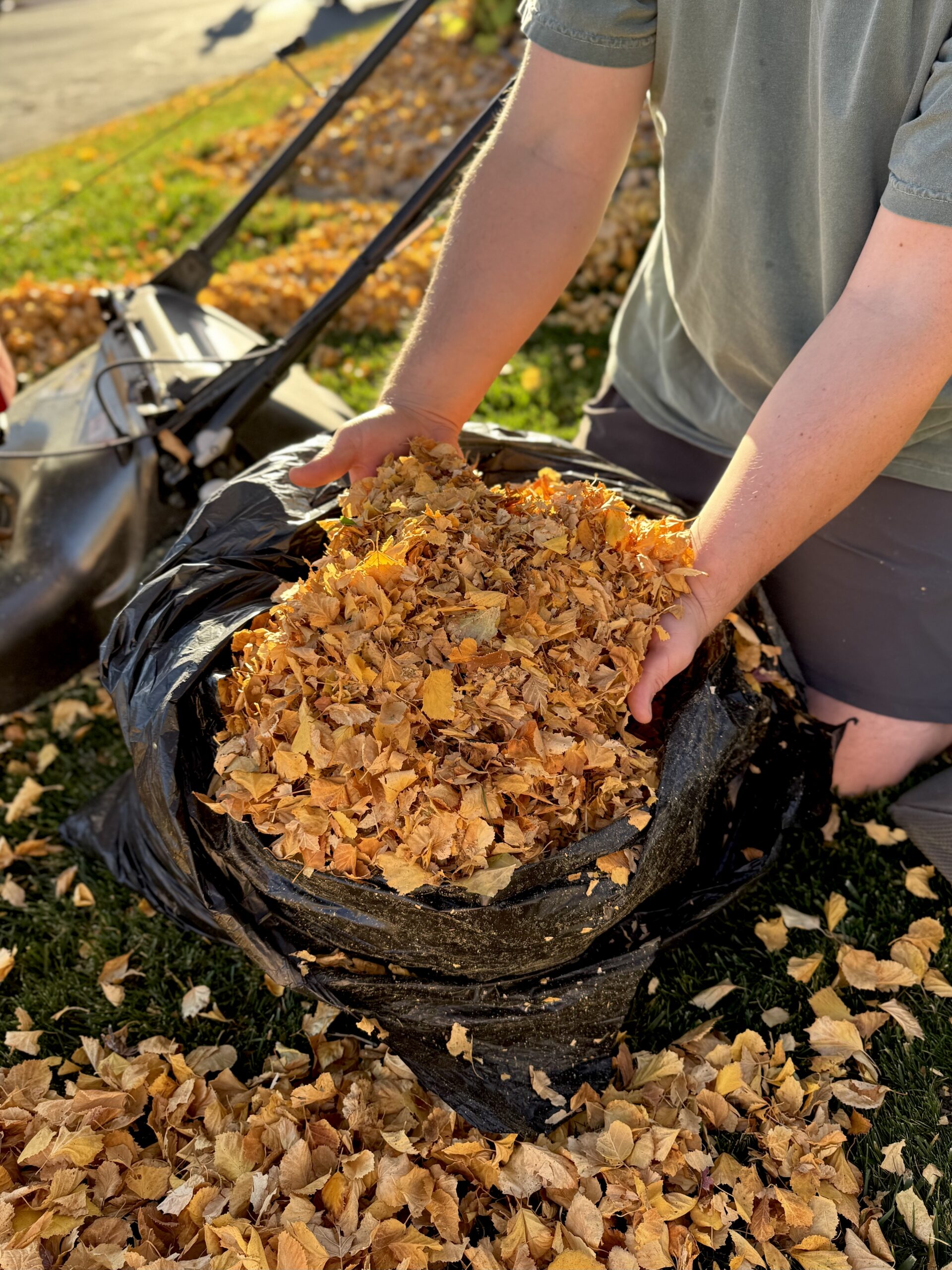
Shade map is so cool! I realized you can adjust the prediction to be above the canopy if there are a lot of trees in the way.
This helped me finally figure out where my peppers were struggling. I’m guessing too much afternoon shade.